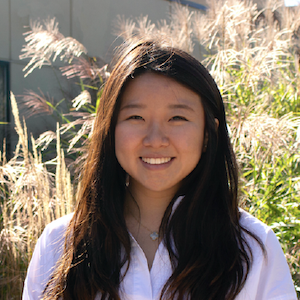
Dana Lee

Brenda Yeung

Su-Min Lee
 Dana Lee |  Brenda Yeung |  Su-Min Lee |
Lee, Dana, Yeung, Brenda
Faculty / Advisor: Lee, Su-Min
University of Pennsylvania School of Dental Medicine, Department of Endodontics
Endodontic treatment aims at preserving teeth that are pulpally damaged. Consequently, this allows for proper function of the dentition and better quality of life of patients. Pediatric patients in the mixed dentition stage have a greater risk of dental caries and higher incidence of dental trauma, which suggests that this age group is in the critical period for dental development and proper dental hygiene training. In this study, we characterized pediatric patients with mixed dentition treated in the Endodontics Department at the University of Pennsylvania (PDM-Endo) and investigated the prevalence, etiology, and patterns of their endodontic treatments.
MethodsClinical and radiographic records of treatment on patients (ages 6-12) referred to the Endodontics graduate program from 06/01/2017 to 06/30/2020 were reviewed. Demographics, pre-operative and post-operative conditions, type of endodontic treatment, and type of behavioral management were recorded. Statistical analysis was performed with the chi-square test (p< 0.05).
ResultsFrom the 6350 patients treated during this time period, 425 teeth (6.7%) were included: 206 (48.5%) were treated with non-surgical root canal therapy (RCT), 161 (37.9%) with vital pulp therapy (VPT), 46 (10.8%) with apexification/revascularization (AR), 12 (2.8%) with non-surgical retreatment (Re-tx). No statistical difference was present in gender. Ages 9-11 were the most commonly treated age group (p< 0.05). Significantly more mandibular molars (41.9%) and maxillary anterior teeth (36.7%) were treated (p< 0.05). Caries (63.5%) was the most common etiological factor (p< 0.05). Trauma (32.5%) was the second most common etiological factor (p<0.05%). The majority of teeth had a pulpal diagnosis of pulp necrosis (39.5%), and the most common periapical diagnosis was normal apical tissues (39.8%), then symptomatic apical periodontitis (38.8%) (p< 0.05). 11% of patients used nitrous oxide while 1.2% used general anesthesia (p< 0.05).
ConclusionOur data revealed that pediatric patients compose around 7% of the population treated at PDM-Endo with caries as the most prevalent reason for treatment. RCT and VPT were the most common treatments rendered with AR and Re-tx as other options. Almost 90% of patients were treated without sedation.
DescriptionPDM Endo Clinic (Virtual)
Project OverviewTo characterize pediatric patients with mixed dentition treated in the Endodontics Department at the University of Pennsylvania (PDM-Endo) and investigate the prevalence, etiology, and patterns of their endodontic treatments.
OutcomePediatric patients with mixed dentition (ages 6-12) compose 7% of patient population at PDM Endo with caries as the most prevalent reason for treatment. NSRCT and VPT were most common with AR and NSRetx as other options. Almost 90% patients were treated without any sedation.